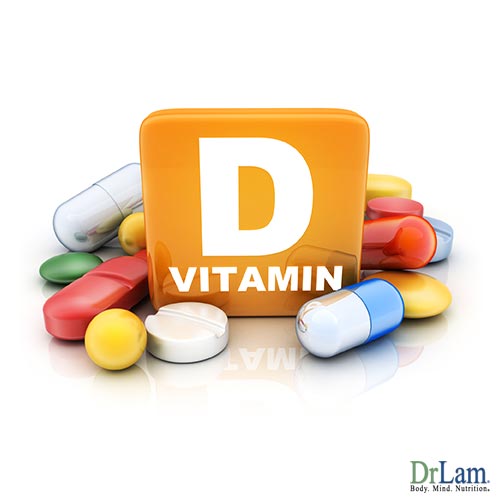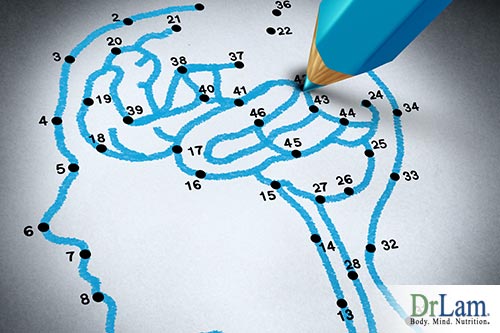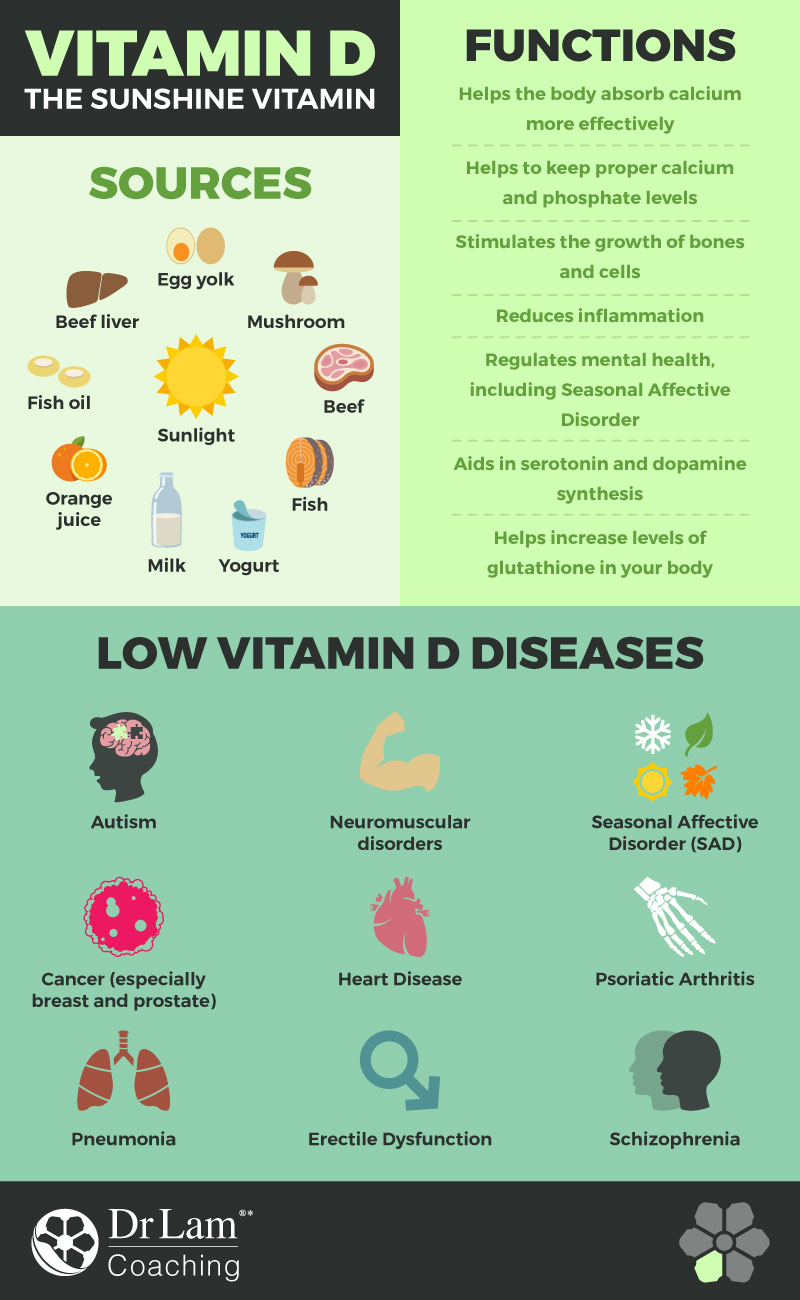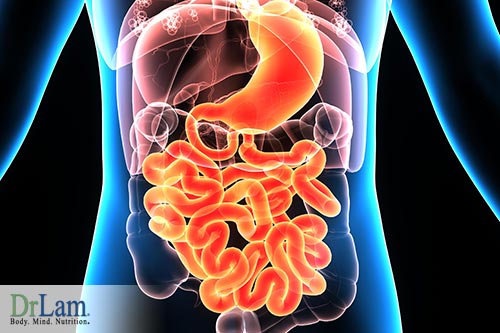 Vitamin D, the “sunshine vitamin,” is important for your body to function. One of the major benefits of vitamin D is the building of strong bones. Supplementation with vitamin D has largely eliminated rickets as a childhood disease. More recently, low vitamin D levels have been associated with a number of illnesses. Likewise, attaining appropriate levels of the vitamin has been associated with improvement in a number of conditions.
Vitamin D, the “sunshine vitamin,” is important for your body to function. One of the major benefits of vitamin D is the building of strong bones. Supplementation with vitamin D has largely eliminated rickets as a childhood disease. More recently, low vitamin D levels have been associated with a number of illnesses. Likewise, attaining appropriate levels of the vitamin has been associated with improvement in a number of conditions.
Some of the functions of Vitamin D in the body include:
The percent of people with low vitamin D levels in the country is estimated to be from 30% to 95%. These estimates depend on the age of the individual and where they live. Three out of four pregnant women have low vitamin D levels. Vitamin D is an important nutrient, and not having enough could cause later health issues for these growing babies.
Having low vitamin D levels doesn’t always cause symptoms. Some people won’t begin showing symptoms until their levels are very low or have been low for some time.
Low vitamin D levels can result in the following issues:

Researchers have found that many people have startlingly low vitamin D levels, not only in this country, but around the world. There are a number of reasons for this.
Not enough vitamin D in your diet. The number of people who aren’t getting enough vitamin D from the foods they eat is increasing. Natural sources of vitamin D include foods like egg yolks, fish, fish oil, and beef liver. Vitamin D can also be found in fortified foods like milk and yogurt. However, most foods contain only small amounts of vitamin D, so it is nearly impossible to get enough from food sources alone.
You don’t get enough sun. Your body makes vitamin D when your skin is exposed to sunlight. If you wear sunscreen, you’re hampering the body’s ability to do this. If you wear long sleeves or clothing that covers your body too much, your skin can’t make enough vitamin D. If you live in the far northern or southern hemisphere, especially during the winter, there may not be enough UV light even with full sun exposure for your body to make vitamin D.
You have darker skin. Darker skin coloring reduces the amount of vitamin D the skin makes with exposure to the sun. This may also be an issue for older people with more melanin in their skin.
Your kidneys aren’t doing their conversion job. Especially as you age, your kidneys can become less efficient in converting vitamin D to its active form. This can lead to low levels of vitamin D.
Your body doesn’t absorb vitamin D well. Various intestinal conditions can cause vitamin D to be poorly absorbed. Crohn’s disease, cystic fibrosis, and celiac disease are some of the more prevalent conditions that keep you from absorbing vitamin D.
Obesity. Fat cells remove vitamin D from the blood, making it less available for the body. If the body mass index is over 30, this may lead to low levels of vitamin D.
 Recent research has shown a connection between low vitamin D levels and autism. One possible mechanism is a link between glutathione levels, mercury and other heavy metals, oxidative stress, and autism. This works because low levels of vitamin D also means low levels of glutathione.
Recent research has shown a connection between low vitamin D levels and autism. One possible mechanism is a link between glutathione levels, mercury and other heavy metals, oxidative stress, and autism. This works because low levels of vitamin D also means low levels of glutathione.
Research has shown a primary reason heavy metals lead to toxicity in the brain is lower levels of glutathione. This chemical is a binding agent that adheres to heavy metals and helps remove them from the body. People with autism have particular difficulty excreting heavy metals. Thus, with lower levels of vitamin D leading to lower levels of glutathione, people with autism are at greater risk of having high levels of heavy metals in their bodies.
While children without autism are able to excrete mercury from their bodies, those with autism may not be able to do so. Mercury in vaccines used in children may have caused injury to those children with autism through this mechanism.
This research gains in importance when the risk factors for autism are considered. Risk factors include:
Some of these risks are associated with vitamin D deficiency. One factor that is present in autism is oxidative stress. Research has shown vitamin D to fight oxidative stress. Lower levels of vitamin D would lead to more oxidative stress.
The environmental risks from toxins often lead to DNA damage and increased risk of autism. Vitamin D both protects against and repairs DNA damage. It also increases glutathione which helps remove toxins from the body.
The anti-inflammatory properties of vitamin D can also help protect against worsening autism symptoms. It has anti-autoimmunity properties, can increase the seizure threshold, increases T-regulatory cells that calm the immune system, and protects mitochondria.
The connection between vitamin D and autism seems clear. More research is needed to further delineate this connection and point to possible ways to either prevent or remedy autism though.
Vitamin D appears to be a major player in the development of some neuromuscular disorders. Researchers have found this connection in a number of different studies recently.
One of these studies, reported to the American Association of Neuromuscular and Electrodiagnostic Medicine convention, indicated a majority of people with neuromuscular conditions also suffer from a low level of vitamin D.
Another study, reported in the journal Neurology in 2014, showed older adults with deficiencies in vitamin D had more than double the risk of developing dementia. One of the most frequently seen forms of dementia is Alzheimer’s disease. Up to 80% of dementia cases are Alzheimer’s.
The subjects for this study were about 1600 adults, age 65 or older, who did not have dementia. Low levels of vitamin D increased dementia risk by 53%. Those subjects with severe deficits in vitamin D had a 125% increased risk of developing dementia compared to people with normal vitamin D levels. Those with low levels of vitamin D had a 70% increased risk of developing Alzheimer’s, and the risk jumped to 120% if they had severe deficits in vitamin D. How vitamin D levels are linked with these conditions isn’t clear. It’s possible that this vitamin somehow helps clear the plaques in the brain associated with dementia.
Another study reported in the journal JAMA Neurology showed people who already have multiple sclerosis (MS) suffer from an increase in the severity and progression of the condition with low vitamin D. Early stage MS sufferers with normal levels of vitamin D developed 57% fewer new brain lesions and had an equally reduced risk of relapse than those with low vitamin D levels. Researchers also suggested that having adequate levels of vitamin D would likely increase the effectiveness of some MS remediation efforts, especially when utilizing interferon beta 1b.
The protective role this nutrient plays in the brain and central nervous system has been suggested from animal studies. If this is the case, it seems logical to think low vitamin D levels in people would make it more likely for them to develop neurodegenerative disorders as they get older.
 A recent study involving people with Parkinson’s disease showed about 70% of those with the condition also had low levels of vitamin D. Earlier research by these same researchers showed 55% of the people they studied with Parkinson’s had low vitamin D levels. 41% of Alzheimer’s patients in the study also had low levels of vitamin D. Only 36% of healthy older adults had low levels of this vitamin.
A recent study involving people with Parkinson’s disease showed about 70% of those with the condition also had low levels of vitamin D. Earlier research by these same researchers showed 55% of the people they studied with Parkinson’s had low vitamin D levels. 41% of Alzheimer’s patients in the study also had low levels of vitamin D. Only 36% of healthy older adults had low levels of this vitamin.
The new research investigating untreated Parkinson’s sufferers found about 95% of them had low levels of vitamin D. These people were followed for 20 months. The researchers found vitamin D levels did not decrease during that time, though the symptoms of Parkinson’s increased. This suggested two things. One, simply increasing levels of vitamin D did not stop or improve symptoms of Parkinson’s. Two, people who develop Parkinson’s may have had low levels of vitamin D for years.

Research indicates there is a definite connection between vitamin D levels and numerous significant medical conditions. This connection is important both for preventing and remediating these conditions.
One study reported in the 2014 issue of Medical Hypotheses found a link between vitamin D deficiency and Seasonal Affective Disorder (SAD), a form of depression. Lack of this vitamin appeared to be a contributing factor in the development of this depression.
The lack of seasonally available sunlight seemed to be the primary factor in the development of SAD. This may be because vitamin D is involved in the synthesis of serotonin and dopamine, neurotransmitters involved in the development of depression. Low levels of these chemicals are associated with depression. When there is less vitamin D being produced by sunlight, lower levels of these chemicals can lead to SAD. Thus, there is a connection between low levels of vitamin D and depression.
Research has shown breast cancer cells grow faster in an environment with low levels of vitamin D. This research from the Stanford University of Medicine indicates a significant and direct link between the amount of vitamin D circulating in the body and the expression of ID1, a gene that is known to be involved in tumor growth and metastasis of breast cancer.
It was hypothesized before that higher levels of vitamin D inhibits the expression of ID1. This research showed a metabolite of the vitamin directly controls the expression of ID1 in breast cancer cells.
The journal Clinical Cancer Research published a study in 2014 showing a link between low levels of vitamin D and prostate cancer. Prostate cancer is the most frequently occurring cancer in men and the second most common cause of death for American men. This study showed that low levels of vitamin D led to aggressive growth of prostate cancer in European-American and African-American men.
In the study, 667 men between ages 40 to 79 underwent prostate biopsies. African-American men with low levels of vitamin D had an especially increased risk of testing positive for prostate cancer.
 Low levels of vitamin D have been associated with increased risk of heart disease. Research shows 70% or more of those who underwent a coronary angiogram had a low level of vitamin D. The American College of Cardiology says vitamin D deficiency has been linked to more severe cases of heart disease.
Low levels of vitamin D have been associated with increased risk of heart disease. Research shows 70% or more of those who underwent a coronary angiogram had a low level of vitamin D. The American College of Cardiology says vitamin D deficiency has been linked to more severe cases of heart disease.
A study in the journal Arthritis Care and Research reported that 62% of people with psoriatic arthritis had low levels of vitamin D. Other research has shown low levels of vitamin D may increase inflammation, making this form of arthritis worse. The mechanism involved may be increased white blood cell levels.
Another study from the University of Eastern Finland found low levels of vitamin D led to a 2.5 times greater risk of developing pneumonia. Other research suggests the mechanism behind this dramatic increase may be the suppression of the immune system that comes with low levels of vitamin D.
The Journal of Sexual Medicine reported a study in 2014 that found men with severe erectile dysfunction (ED) had much lower levels of vitamin D than men with mild ED. This is the most frequent sexual problem among men and may stem from other conditions as well.
The risk of developing this serious mental condition may be increased by low vitamin D levels. People with this deficiency are twice as likely to develop this condition as those without a deficiency. This is according to a study published in the 2014 edition of the Journal of Clinical Endocrinology and Metabolism. Schizophrenia is a severe disorder of the brain affecting more than two million American adults. There is no permanent fix, but there are things you can do about the condition.
There is some confusion about the optimum levels of vitamin D. Part of this confusion has to do with our bodies being able to produce vitamin D from the sun. This way of obtaining vitamin D makes it difficult to determine exactly how much is needed from foods and supplements.
Recommendations vary widely, and to be safe, it’s always a good idea to consult your healthcare professional. The recommended daily allowance of vitamin D for infants up a year of age is 400 IU daily, for adults up to age 70 it is 600 IU daily, and for those over 70 it is 800 IU daily. People with significant deficits may require 1000 IU daily or more. Some experts set the safe upper limit for adults at 4000 IU per day, but others argue a much higher upper limit is safe. Make sure you take care to consider what is right for your body.
Foods with the highest levels of natural vitamin D include:

Other foods must be fortified to increase vitamin D. These include:
Getting out in the sun is another way to increase vitamin D levels. This stimulates your skin to produce the vitamin. In order for this to work, however, you must be in direct sun. Otherwise, the process won’t take place. You will need to balance the need for sunscreen with the importance of getting vitamin D. Also, if you live far from the equator in the winter, there may simply not be enough UV light for your skin to make vitamin D.
Supplementation with vitamin D should be carried out with the assistance of your healthcare professional. The amount needed is most likely an individual situation. If supplements are taken for too long a time or at too high a dose, side effects can result. Headaches, sudden weight loss, and kidney stones can sometimes occur, in addition to poor appetite, nausea, or vomiting.
Adrenal Fatigue Syndrome (AFS) is a condition that can develop due to chronic stress and its effects on your body. When stress happens, the hypothalamic-pituitary-adrenal (HPA) axis is triggered. The result is the secretion of cortisol, the stress fighting hormone, from the adrenal glands. Ideally, this would take care of the stress, and your body would return to a resting state.
Unfortunately, in our stress-filled world sometimes stress continues. This places a tremendous burden on the adrenals to continue secreting cortisol. At some point, the adrenals can no longer produce enough cortisol to fight the stress effects. This results in adrenal exhaustion or AFS.
Once the adrenals are no longer capable of secreting cortisol, other symptoms of AFS emerge. At first, these symptoms are nonspecific and may be missed by traditionally trained medical professionals.
Fatigue and lethargy are the most prevalent symptoms of this condition. Other symptoms that may come with these include not being able to concentrate, difficulty going to sleep, gaining weight around the middle of the body and not being able to lose it, anxiety and depression, increased allergies, and brain fog. All of these symptoms come on slowly and are hard to connect.
Traditionally trained medical professionals often do not make the connection among the symptoms of AFS. They simply follow their training by looking at and attempting to remediate individual symptoms or individual organs that are affected. This is not a sufficient approach to assessing and remediating AFS.
Instead, the NeuroEndoMetabolic (NEM) Stress Response model of assessing and remediating stress-related illness conditions is required. This more comprehensive approach looks at several organ systems and the way they are inter-related. In essence, what affects one affects others as well. This gives alternative medicine practitioners who use the NEM model a comprehensive way of approaching assessment and remediation of AFS.
Using this functional medicine approach allows practitioners to search out the underlying pathology involved in the symptom picture. Much of the time, symptoms are just the surface presentation of these underlying pathologies. Conventional medicine and its approach to remediating them often leads to covering them up instead of following them to their source.
 The NEM approach focuses on looking at the relationships between the environment and several organ systems, such as the gastrointestinal, metabolic, immune, and endocrine systems. The end result of this kind of investigation is to restore balance among these various systems.
The NEM approach focuses on looking at the relationships between the environment and several organ systems, such as the gastrointestinal, metabolic, immune, and endocrine systems. The end result of this kind of investigation is to restore balance among these various systems.
Vitamin D can affect both your adrenals and the NEM Stress Response. Due to the effects of vitamin D and SAD, neurotransmitter imbalance can be a common symptom, and an upset in the neuroaffect circuit is not uncommon. Furthermore, vitamin D also has immune boosting and anti-inflammatory effects as well. This can really help the inflammatory circuit to regulate stress in your body.
These healing properties make vitamin D a crucial part in balancing stress in the body, helping overcome the effects of stress, and ensuring long-term health and wellness at all ages.
The effects of low vitamin D level show themselves in many significant illnesses and conditions. Research findings show definite connections between vitamin D and Alzheimer’s, Parkinson’s, autism, dementia, and multiple sclerosis. Research continues into these associations, but overwhelmingly evidence shows low vitamin D is not good for long-term health.
